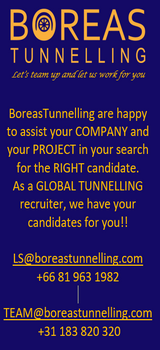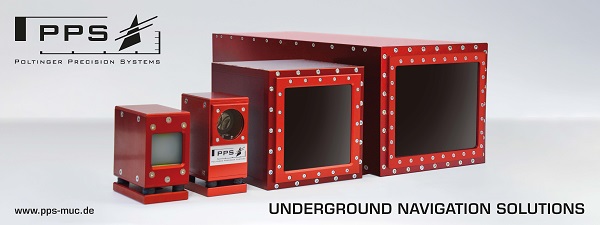VTA Backs off from large bore design for BART Silicon Valley Phase II project. "Too risky & expensive"
I had recently written about Santa Clara Valley Transportation Authority's plans to build the world's largest subway tunnel in diameter. VTA planned to go for a 55.1 foot (~17 meter) in diameter tunnel design. The main aim of this design was to have a 'Center Platform' design in the stations, rather than more conventional way of implementing platforms on different levels.
Well, that plan is off the table. A VTA press release, ironically titled 'Good News for VTA’s BART Silicon Valley Project' penned by Bernice Alaniz now says:" engineering on the larger diameter tunnel reached a 10% design level indicating higher projected risks and costs beyond the funding available. VTA also held an industry forum to share project information with prime and subcontractors and tunneling experts. Following this forum, we received feedback from tunneling contractors that due to the higher risks associated with the larger tunnel, they may be less inclined to bid on the project, thus reducing competition and increasing prospective bids. Higher projected costs and associated risks required us to take a step back and review the options for moving forward.."
Stated reasons: Cost, Technology Risks, Contractors' Dislike
Cost: It is circulated in the valley press that a large bore tunnel of that diameter would cost $4Billion over the budgeted $6.5Billion. This is strange because VTA has been previously promoting the large bore as being only more expensive at the fraction of that amount.
Large bores have the advantage of accommodating also the stations. Hence with such large bores, it is generally not necessary to turn the city centers into large building sites for building with cut and cover stations. It is not clear if the VTA took into the account the opportunity cost to the dispruption city center for building the stations. Large bores are also in general considered less costly than twin tube tunnels.
Design Risk: As for the design risks, large diameter tunnels are a proven engineering fact, pioneered by the Spanish tunnel engineers at Barcelona's Line 9. Although at 55.1 foot (~17 meter), the BART Silicon Valley Phase II tunnel would be the largest in the world for a subway tunnel. In comparison, Barcelona's Line 9 has a diameter of "only" 12 meters.
Contractors' Dislike: The last stated reason by VTA may well be the most important factor for ditching the large bore design. VTA was concerned that the contractors would not bid for the project. They feared not enough number of contractors would bid and the VTA would not have leverage to negotiate a good price for the project. US Contractors indeed do not have much experience in large bores for subways and this could well cool them off for taking part. This would potentially wide open the doors to another potential disaster equally unacceptable for Americans: An overseas contractor potentially getting such an important infrastructure project.
Knowing that almost certainly such a tunnel would be bored by a non-American tunnel boring machine (there are simply no TBM manufacturers with such large bore experience), a foreign contractor on top of that may not be the most palatable thing in a 'Make America Great Again' era.
What now?
Out of original three alternative designs, now the large-bore option is gone, VTA is left with two options: A twin-bore or single bore (with stacked platforms at stations) design.
From VTA's press release, VTA clearly prefers the single-bore option, "The twin-bore configuration remains to be a less favorable option due to its construction impacts, specifically in the downtown San Jose core".
VTA now tries to amend the points it once showed as the disadvantages for the stacked station design (as opposed to large design): "While BART expressed earlier operational concerns with the environmentally cleared single bore stacked platform configuration, there is an opportunity to address these concerns through some design enhancements. ..... In response to BART’s concerns, enhancements to the single bore project have been developed by utilizing the 13th Street and Stockton Avenue mid-tunnel ventilation facility sites to optimize both ventilation and emergency evacuation, and provide operational flexibility. These changes include reconfiguration and enhancement of these sites and refinements to the track arrangement within the single-bore tunnel".
We will see...
"The tunnel design the agency’s staff spent a year pursuing is some $4 billion more expensive than initially believed and substantially riskier than other designs, General Manager Nuria Fernandez told the agency’s board" reports East Bay Times:
VTA drops plan for record-breaking downtown San Jose BART tunnel, will seek smaller options
www.eastbaytimes.comWhat remains unclear is how much the redesigned project will cost, or when BART trains will finally roll into the center of the Bay Area’s largest city.
"The tunnel design the agency’s staff spent a year pursuing is some $4 billion more expensive than initially believed and substantially riskier than other designs, General Manager Nuria Fernandez told the agency’s board" reports East Bay Times:
VTA drops plan for record-breaking downtown San Jose BART tunnel, will seek smaller options
www.eastbaytimes.comWhat remains unclear is how much the redesigned project will cost, or when BART trains will finally roll into the center of the Bay Area’s largest city.
"VTA engineers have returned to the concept of a smaller single-bore tunnel in which the two tracks would be stacked atop one another with separate upper and lower station platforms... [to avoid] years of disruption from conventional cut-and-cover digging from the surface"
"VTA officials earlier this year said the 55-foot-wide tunnel design was not riskier than other subway building methods, and downplayed the idea that it was adding to the project’s overall cost, even though that tunnel was substantially larger than prior plans for the project"
VTA drops plan for record-breaking downtown San Jose BART tunnel, will seek smaller options
www.mercurynews.comWhat remains unclear is how much the redesigned project will cost, or when BART trains will finally roll into the center of the Bay Area’s largest city.
My previous post on Silicon Valley Phase II
Santa Clara VTA to Build World's Biggest Subway Tunnel in Diameter
tunnelcontact.comSanta Clara Valley Transit Authority plans to build a 55,1 foot (~17 meter) in diameter subway tunnel for the BART Silicon Valley Phase II project. BART stands for 'Bay Area Rapid Transport'.
Lengthwise it is not such a long line, about...
WDOT's Bertha the TBM used to bore Highway 99 tunnel was a 57.5-foot-diameter diameter. So, there is some know-how with large bores in the USA. Before anyone jumps in, I know the TBM was a Japanese Hitachi Zosen. I am simply pointing out the experience of contractors.
What is problem with stacked platforms? Still in one tube, therefore not necessary cut and cover station construction.
I think VTA already opted for the “single bore stacked platform configuration”. Twin tube option is gone.
After much debate, VTA and BART see eye-to-eye on Silicon Valley project
sanjosespotlight.comBringing Bay Area Rapid Transit (BART) to Silicon Valley has proven difficult due to costs and because BART and the Santa Clara Valley Transportation Authority (VTA) officials haven’t always seen eye-to-eye, but on Friday the agencies made a...
cover tunnel photo by: Matt Brown from London, England / CC BY
Copyright 2019-2024 TunnelContact.com












Santa Clara VTA press release published yesterday: 'Good News for VTA’s BART Silicon Valley Project'
https://www.vta.org/blog/good-news-vtas-bart-silicon-valley-project
Good News for VTA’s BART Silicon Valley Project | VTA
www.vta.orgOver many months, VTA and BART have been sharply focused on overcoming hurdles that have tried to derail the long-time goal of bringing critical transportation solutions to Santa Clara County.